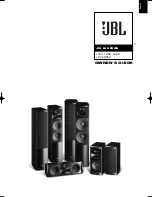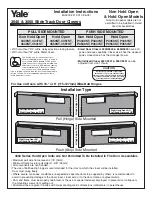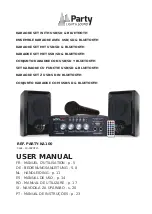
27
www.ventilation-system.com
3. Fan maintenance (once per year).
Even in case of regular maintenance of the filters, some dust may accumulate inside the fans and reduce the fan performance and supply air
flow.
Clean the fans with a soft cloth or brush. Do not use water, aggressive solvents or sharp objects as they may damage the impeller.
4. Supply air flow control (twice per year).
The supply duct grille may get clogged with leaves and other objects reducing the unit performance and supply air delivery. Check the supply
grille twice per year and clean it as required.
5. Ductwork system maintenance (once in 5 years).
Even regular fulfilling of all the prescribed above maintenance operations may not completely prevent dirt accumulation in the air ducts which
leads to air pollution and reduces the unit capacity. Duct maintenance means regular cleaning or replacement.
POSSIBLE FAULTS AND TROUBLESHOOTING
Problem
Possible reasons
Troubleshooting
The fan(s) do(es) no start.
No power supply.
Make sure the power supply line is connected correctly, otherwise
troubleshoot a connection error.
The motor is jammed, the impeller blades are soiled.
Turn the unit off. Troubleshoot the motor jam and the impeller
clogging. Clean the blades. Restart the unit.
Alarm in the system. System alarms are listed below.
Identify the system failure by entering the active alarms menu and
remedy the problem. If the system failure may not be remedied
without enlisting expert help contact the Seller.
Automatic circuit breaker
tripping following the unit
turning on.
High current consumption due to short circuit in power line.
Turn the unit off. Contact the Seller.
Low air flow.
Low set fan speed.
Set higher speed.
The filters and the fans are soiled, the heat exchanger is soiled.
Clean or replace the filters, clean the fans and the heat exchanger.
Ventilation system elements (air ducts, diffusers, louver shutters, grilles)
clogged, damaged or closed.
Clean or replace the ventilation system elements, such as air ducts,
diffusers, louvre shutters, grilles.
Cold supply air.
The extract filter is soiled.
Clean or replace the extract filter.
Unit in Cooling mode.
Check the unit operation settings.
Noise, vibration.
The impeller(s) is soiled.
Clean the impeller(s).
The fan or casing screw connection is loose.
Tighten the screw connection of the fans or the casing against stop.
No anti-vibration connector on air duct pipe flanges.
Install anti-vibration connectors.
Heat medium leakage.
Water heater connecting system is damaged.
Cut off the heat medium supply using shutoff valve and eliminate the
cause of leakage. Contact the Seller.
SYSTEM ALARMS
Fire alarm
Emergency system shutdown on command from the fire alarm board. This
alarm interrupts the fan operation.
In case of such alarm follow the emergency instructions and leave the
room and the building.
Temperature sensor failure
Interruption or shortening in the temperature sensor circuit; This alarm
interrupts the fan operation.
Contact the Seller.
Control panel failure
Control panel communication error.
Check the connection of the control panel to the controller. Contact
the Seller.
Low supply air temperature
If the supply air temperature (factory setting) is below +14 °C.
Clean or replace the extract filter. Check the unit operation settings.
Filter replacement required
Appears on elapsing of the filter replacement interval.
Clean or replace the intake and the extract filter.
STORAGE AND TRANSPORTATION REGULATIONS
Store the unit in the manufacturer’s original packing box in a dry closed ventilated premise with temperature range from +5 °C to + 40 °C.
Storage environment must not contain aggressive vapours and chemical mixtures provoking corrosion, insulation and sealing deformation.
Use hoist machinery for handling and transportation to prevent possible mechanical damages of the unit.
Follow the applicable moving regulations specific to the particular cargo type while loading and unloading.
The unit can be carried in the original packing by any mode of transport provided proper protection against precipitation and mechanical
damage. The unit can be transported only in the working position.
Avoid sharp blows, scratches or rough handling during loading and unloading.
Prior to the initial power-up after transportation at subzero temperatures allow the unit to warm up at room temperature for at least 3-4
hours.






































